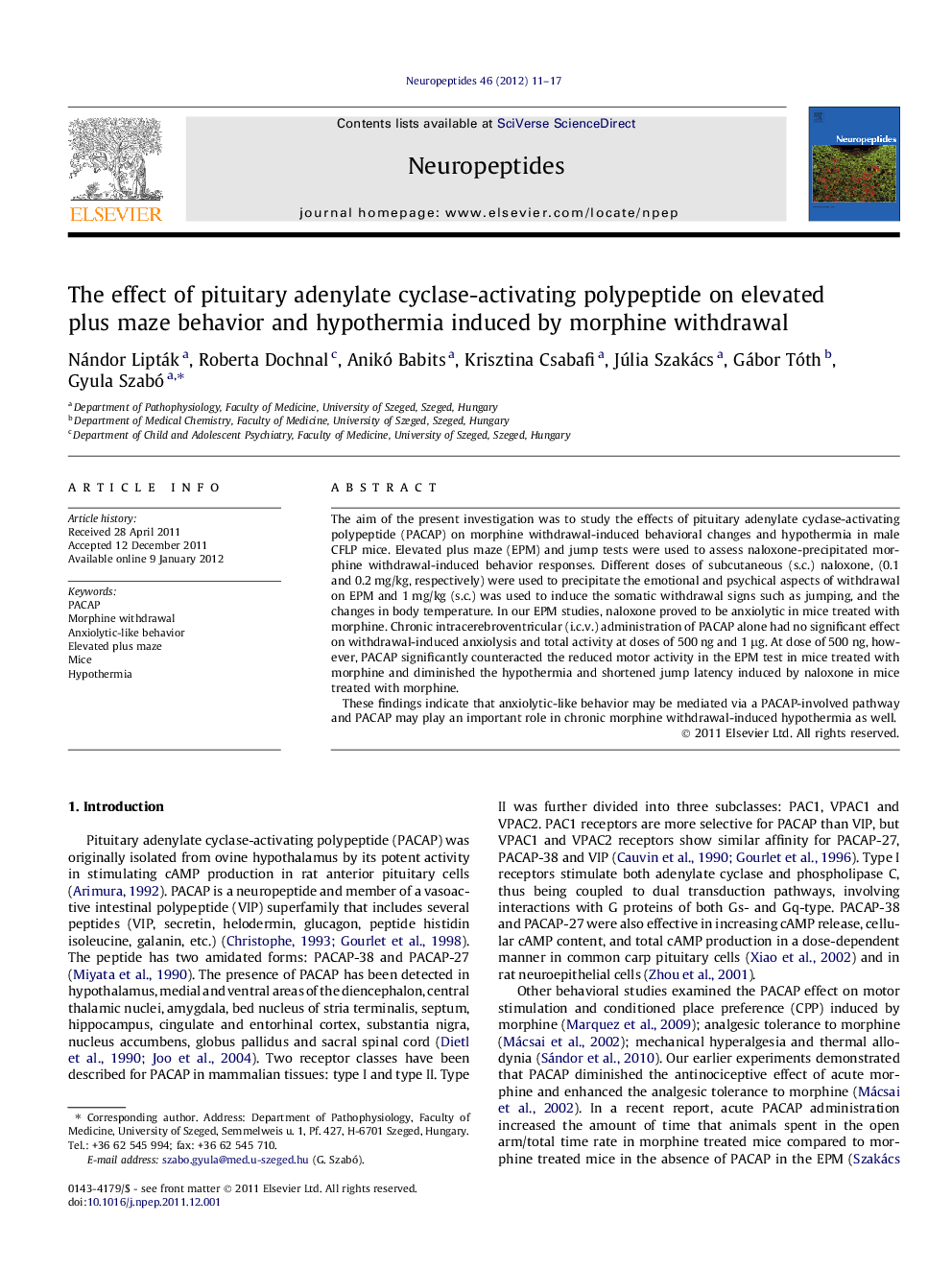| Article ID | Journal | Published Year | Pages | File Type |
|---|---|---|---|---|
| 2808297 | Neuropeptides | 2012 | 7 Pages |
The aim of the present investigation was to study the effects of pituitary adenylate cyclase-activating polypeptide (PACAP) on morphine withdrawal-induced behavioral changes and hypothermia in male CFLP mice. Elevated plus maze (EPM) and jump tests were used to assess naloxone-precipitated morphine withdrawal-induced behavior responses. Different doses of subcutaneous (s.c.) naloxone, (0.1 and 0.2 mg/kg, respectively) were used to precipitate the emotional and psychical aspects of withdrawal on EPM and 1 mg/kg (s.c.) was used to induce the somatic withdrawal signs such as jumping, and the changes in body temperature. In our EPM studies, naloxone proved to be anxiolytic in mice treated with morphine. Chronic intracerebroventricular (i.c.v.) administration of PACAP alone had no significant effect on withdrawal-induced anxiolysis and total activity at doses of 500 ng and 1 μg. At dose of 500 ng, however, PACAP significantly counteracted the reduced motor activity in the EPM test in mice treated with morphine and diminished the hypothermia and shortened jump latency induced by naloxone in mice treated with morphine.These findings indicate that anxiolytic-like behavior may be mediated via a PACAP-involved pathway and PACAP may play an important role in chronic morphine withdrawal-induced hypothermia as well.
